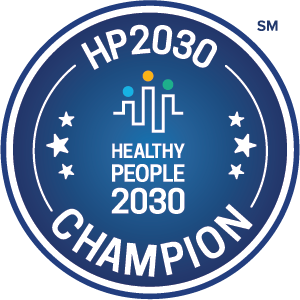ICAA Research Review, Volume 24, Issue 12
ICAA Research Review is published monthly for ICAA members. Complimentary issues are sent periodically to people who register.
In this issue
- Stats: 82% of older multifamily properties need to boost Wi-Fi
- People living longer, but not healthier - especially in US
- More than one-third of adults 50-80 feel lonely, isolated
- Eating highly processed foods linked to fatty muscles
- Decision aid helps older adults decide when to stop driving
- Tech Talk: Nine research projects for healthy aging funded
Stats: 82% of older multifamily properties need to boost Wi-Fi
Fast, secure, reliable connectivity is now an expectation at multifamily residences, and a white paper from the market research firm Parks Associates points to the need, challenges, and potential solutions for upgrading connected infrastructures, especially in older buildings. Properties need connectivity solutions that enable residents to work, attend class, stream video and engage in other high-bandwidth activities, while communities need solid Wi-Fi to help them better manage operations, reduce costs, and reduce risk in the face of escalating insurance costs. This is especially important because robust Wi-Fi can be a differentiator for potential customers.
The researchers found that investments in connectivity no longer need to be limited to new builds. Older properties are often in the most urgent need of upgrading; 82% of properties 10 years old or older that offer Wi-Fi have difficulty maintaining solid, reliable connectivity compared to 13% of newer properties.
An example: Smart thermostats and smart appliances appeal to both residents and to properties, serving both as an amenity and as cost-cutting tools. Reliable connectivity is needed to control the thermostat and lighting in vacant units. Connectivity also helps save energy in common areas and helps residents save on energy with smart thermostats.
For these and other reasons, management in older communities may want to evaluate the robustness of their services and consider upgrading when feasible.
SOURCE: Parks Associates (December, 2024). Scaling Connectivity for Multifamily Properties. https://www.parksassociates.com/products/whitepapers/scaling-connectivity-for-multifamily-properties
KEYWORDS: Multifamily, Wi-Fi
To download the white paper, click here and complete the form
[top]
People living longer, but not healthier - especially in US
People around the world are living longer -- but not necessarily healthier -- lives, according to Mayo Clinic research. A study of 183 World Health Organization (WHO) member countries found those additional years of life are increasingly fraught with disease.
Researchers studied statistics from the WHO Global Health Observatory. This cross-sectional study provided data on life expectancy, health-adjusted life expectancy, years lived with disease and years of life lost among member states. The healthspan-lifespan gap for each member state was calculated by subtracting health-adjusted life expectancy from life expectancy.
Life expectancy, or lifespan, increased from 79.2 to 80.7 years in women and from 74.1 to 76.3 years in men between 2000 and 2019, according to WHO estimates. However, the number of years those people were living in good health did not correspondingly increase. The average global gap in lifespan versus healthspan was 9.6 years in 2019, the last year of available statistics. That represents a 13% increase since 2000.
The United States recorded the world's highest average lifespan-health span divide, with Americans living 12.4 years on average with disability and sickness. This increase from 10.9 years in 2000 comes as the US also reported the highest burden of chronic disease. Mental health, substance use disorders and musculoskeletal conditions were the key contributors to illness nationally.
In addition, the study found a 25% gender disparity worldwide. Across the surveyed countries, women experienced a 2.4-year larger gap in lifespan versus healthspan than men. Neurological, musculoskeletal, urinary and genital tract disorders contributed to extended years of poor health among women.
"The widening healthspan-lifespan gap globally points to the need for an accelerated pivot to proactive wellness-centric care systems," said lead author Armin Garmany, an MD/PhD. student at Mayo Clinic. "Identifying contributors to the gap unique to each geography can help inform healthcare interventions specific to each country and region."
SOURCE: Mayo Clinic (December 11, 2024). Garmany A, et al. JAMA Network Open, 2024; 7 (12): e2450241 DOI: 10.1001/jamanetworkopen.2024.50241
KEYWORDS: Health span, Longevity
To download the full article, click here
[top]
More than one-third of adults 50-80 feel lonely, isolated
Loneliness and isolation among older people in the US have mostly returned to pre-pandemic rates, but that means more than one third of people ages 50 to 80 feel lonely, and nearly as many feel isolated, a review of six years of data from the National Poll on Healthy Aging found.
And some older adults -- especially those dealing with major physical health or mental health issues -- have much higher rates of loneliness and social isolation than others. It's something active-aging organizations should be aware of.
Starting in 2018, and most recently earlier this year, the poll asked more than 2,000 older adults (different groups each year) how often they'd felt they lacked companionship, and felt isolated from others. The latest data show that in 2024, 33% of respondents felt lonely some of the time or often in the past year, about the same as the rate in 2018 (34%). During the years in between, as many as 42% had this level of loneliness.
Similarly, 29% of respondents said they felt isolated some of the time or often in 2024, just above the rate of 27% seen in 2018. During the early months of the COVID-19 pandemic, 56% said they had experienced this level of isolation, but the rate has declined each year since.
"At the surface, this might seem like great news, that we're back to where we were before COVID-19 struck. But that baseline was not good, and it was especially bad for some groups of older adults, who continue to have very high rates of loneliness and social isolation," said Preeti Malani, MD, MSJ, the study's lead author and a professor of internal medicine at the University of Michigan Medical School.
The groups of older adults with the highest rates of loneliness in 2024 – all at least double the rates in previous years -- were those who said:
- Their mental health is fair or poor: 75%
- Their physical health is fair or poor: 53%
- They were not working or received disability income (does not include retirees): 52%
- These groups also had the highest rates of isolation.
The authors advise screening people for loneliness and isolation and connecting them with resources in their communities.
SOURCE: Michigan Medicine – University of Michigan (December 9, 2024). Malani P, et al. JAMA. Published online December 9, 2024. doi:10.1001/jama.2024.23213 KEYWORDS: Loneliness, Isolation
To download the full article, click here
To access the poll, click here
[top]
Eating ultraprocessed foods linked to fatty muscles
A diet high in ultra-processed foods is associated with higher amounts of fat stored inside thigh muscles, regardless of the number of calories consumed or level of physical activity, according to a study presented at the annual meeting of the Radiological Society of North America (RSNA). Higher amounts of intramuscular fat in the thigh could also increase the risk for knee osteoarthritis, the authors noted. Active-aging organizations might consider evaluating not only foods offered at mealtimes, but also available snacks.
Foods such as breakfast cereals, margarines/spreads, packaged snacks, hot dogs, soft drinks and energy drinks, candies and desserts, frozen pizzas, ready-to-eat meals, mass-produced packaged breads and buns, and more, include synthesized ingredients and are highly processed. These ultra-processed foods usually have longer shelf lives and are highly appealing, as they are convenient and contain a combination of sugar, fat, salt and carbohydrates that affect the brain's reward system, making it hard to stop eating.
For the study -- the first to assess the relationship between skeletal muscle quality and diet quality -- researchers analyzed data from 666 individuals (average age, 60; two-thirds men) who participated in the US Osteoarthritis Initiative research study but who were not yet affected by osteoarthritis. They noted that earlier research has shown that quantitative and functional decline in thigh muscles is potentially associated with the onset and progression of knee osteoarthritis.
The study authors found that the more ultra-processed foods people consumed, the more intramuscular fat they had in their thigh muscles, regardless of energy (caloric) intake. They note that the findings offer a new perspective on how diet quality affects musculoskeletal health.
SOURCE: Radiological Society of North America (December 4, 2024). Akkaya Z et al. Eating high-processed foods impacts muscle quality.
KEYWORDS: Ultraprocessed food, Fat
To download a video of the presentation at the Radiological Society of North America’s annual meeting, click here
To learn more about the Osteoarthritis Initiative, click here
[top]
Decision aid helps older adults decide when to stop driving
As many readers know, deciding when to stop driving can be challenging for older adults and their families. A recent study shows that using a decision aid tool can be help individuals faced with this difficult decision. In a randomized clinical trial with more than 300 participants, researchers looked at the long-term impact of providing Healthwise®, an online driving decision aid, to older adults to help reduce uncertainty towards their intent to continue or stop driving.
The researchers conducted follow-up interviews every six months for two years to study the effect on the participants, who were ages 70 and older and had health conditions that might affect their driving ability. They found that overall, after two years of follow-up, the group who used the online driving decision aid had significantly less personal uncertainty about which action to take (i.e., less decisional conflict) and less distress after making the decision (i.e., less decision regret) than the group who didn’t use the aid. However, use of the aid did not reduce the depression that occurred for some when the decision was made.
The authors concluded that using a decision aid could help older adults have better experiences deciding whether to stop or continue driving - a decision that can evoke sadness and a sense of loss as driving often represents independence and mobility.
SOURCE: University of Colorado Anschutz Medical Campus (December 5, 2024). DiGuiseppi CG, et al. Journal of the American Geriatrics Society. First published: 04 December 2024 https://doi.org/10.1111/jgs.19293
KEYWORDS: Driving, Decision aid
To read the abstract of the study, click here
To access the decision aid, click here
[top]
Tech Talk: Nine research projects for healthy aging funded
Following a competitive, national call for proposals, AGE-WELL, Toronto, Canada, announced funding for nine research projects through its 2024 AgeTech Advance: Healthy Aging Research Program (HARP), aimed at advancing the development and application of technology-enabled solutions that support healthy aging. Research is one of three interconnected pillars through which AGE-WELL is advancing Canada's aging innovation ecosystem.
The new projects cover a broad range of technologies and services, and address all of AGE-WELL's challenge areas. Here are some examples:
- Outreach and education to familiarize older adults with virtual emergency departments. A Sunnybrook Research Institute team is working with older adults, family caregivers and healthcare providers to co-design strategies and education materials to increase older adults' comfort with and access to virtual emergency departments.
- Assessing social connections in care homes using real-time location data. Researchers at the KITE Research Institute at University Health Network and partners are evaluating the use of real-time location data from a retirement home nurse-call system to help care providers identify older adults who need support to improve their social connections.
- Adaptive mobile health tool for dementia prevention. This project is focused on promoting physical activity to help prevent dementia. Taking a personalized approach, the research team is integrating mobile cognitive assessments into real-time smartphone and wearable sensors to monitor older adults' cognitive function and physical activity to offer them accessible interventions designed to reduce dementia risk.
- Leveraging virtual reality (VR) storytelling to support older Indigenous adults' connections while in the hospital. A team at the University of British Columbia, in partnership with Indigenous stakeholders, are building on their established protocol and tools to create Indigenous VR storytelling videos that offer Indigenous patients with dementia a way to connect to their interests, and decrease loneliness and feelings of stress and anxiety while in the hospital.
- Bolstering evidence for a technology-assisted therapeutic walking program. This research project measures how technology to reward a good gait pattern added to the established Walk-Best Program impacts older adults' gait pattern, walking activities and brain health outcomes in order to promote the use of the program across Canada.
SOURCE: AGEWELL (December 4, 2024).
KEYWORDS: Technology, Healthy aging
To download summaries of all the winning projects, click here
To learn more about AGE-WELL’s pillars to support an innovation pipeline in Canada, click here
--reported by Marilynn Larkin
Suggestions? Email mlarkin@icaa.cc
[top]
Disclaimer
ICAA Research Review shares knowledge and information. The newsletter is not intended to replace a one-on-one relationship with a qualified health care professional and is not medical advice. The ICAA encourages you to make health and business decisions based upon your own research and in partnership with a qualified professional.






























